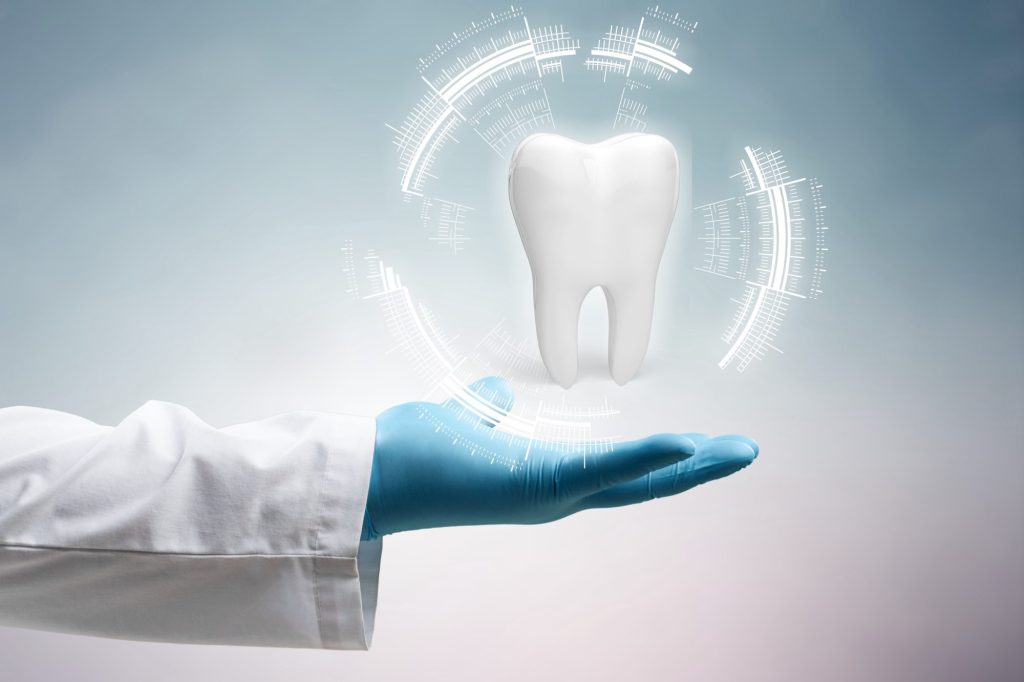Dental exams today often involve less time and discomfort, thanks to the newest advancements in technology. One such advancement is the intraoral camera, a device that allows for a quicker diagnosis and also allows patients to become more involved and aware of what is actually going inside their own mouths. Below is practically everything you need to know about these intraoral cameras and how you can benefit from them on your next visit to the dentist.
What is an Intraoral Camera?
The intraoral camera is a compact device similar in size to that of a large pen and contains a bright light built into its tip. Within the device is a tiny camera that can capture high-resolution images of the interior of your mouth and provide your dentist with the ability to make a quicker and more accurate diagnosis.
The wand-like device can be moved around inside the mouth in a way that avoids abrasions and hard bumps to dental tissue. If at any time you feel even a slight bit of discomfort, your dentist can remove the device and wait until you are ready to try again.
The use of intraoral cameras is entirely safe as long they are being handled by a dental professional. To increase your safety, a plastic protector or sleeve is slipped over the device prior to insertion in your mouth, lessening the chance of spreading potential germs.
How Exactly Does an Intraoral Camera Work?
To ease any anxiety, it is helpful to know how the intraoral camera works and what to expect. Here is the simple process.
As your dentist slowly and gently maneuvers the intraoral camera around inside the mouth, the camera portion can focus on one area or a specific tooth. While there, it takes clear, high-resolution images while also simultaneously projecting those images onto a nearby computer screen.
At this point, your dentist can show you the screen and explain what the image is before moving on to another tooth or section of the mouth. You can ask questions and gain a better understanding of what is happening inside your mouth.
Images captured by the intraoral camera are instantaneous, meaning you can see them right away as opposed to having to wait like with conventional x-rays. Another primary difference between the two is that while x-rays will show internal structures, an intraoral camera will only provide images of the exterior of gums and teeth but in exceptionally high detail. You may still need x-rays later on if your dentist determines it necessary.
These images will be kept in your digital dental files for referring back to as needed, such as to confirm your progress after a treatment. Your dental team also has the option to print out the images. The reasons for doing so are to share them with a specialist you are being referred to or to send them to a dental lab that is making your custom restoration, such as a crown.
What Can an Intraoral Camera Diagnose Quickly?
With the ability to gain a closer look at what is going on inside your mouth, the intraoral camera can help your dentist diagnose various conditions quicker, such as:
- Plaque build-up
- Cavities
- Broken fillings
- Discolorations
- Stress lines
- Tiny cracks
- Fractures
- Failing restorations (crowns, dental bridges, etc.)
- Mouth sores or lesions, and
- Gum disease or inflammation
By identifying such conditions early, your dentist can plan a treatment that will prevent the occurrence of more serious issues down the road and keep you from suffering unnecessary pain or discomfort.
What are the Distinct Benefits of Intraoral Cameras?
To recap, there are several distinct benefits for capturing images of the interior of your mouth with an intraoral camera, and these include the following.
- An increase in patient comfort as opposed to that of bulky, traditional x-ray techniques
- Avoids further irritation of sensitive teeth or gum tissue
- Provides a quick view and assessment of dental issues, leading to a faster diagnosis and recommended course of action.
- Allows the patient to be involved in the diagnosis and treatment planning, resulting in a higher likelihood of a successful outcome.
- Creates a more detailed baseline of a patient’s dental health for referring back to determine when improvements are progressing or complete, or if new issues appear.
- Lessens the number of dental appointments the patient requires
- Creates detailed records for submitting to dental insurance companies
There are few, if any, downsides to intraoral cameras, and the benefits continue to build as they become more and more common in dental offices across the country.
Schedule your Next Dental Exam with South Dayton Smiles Today
When it comes to patient comfort and convenience, our team here at South Dayton Smiles will go the extra mile, and that includes using the latest dental technology, like the intraoral camera, during your dental exam. Contact our office today to schedule your next appointment.

 Meet Dr. Botti
Meet Dr. Botti Meet Dr. Scranton
Meet Dr. Scranton
 Patient Forms
Patient Forms Online Bill Pay
Online Bill Pay Benefit Program
Benefit Program Your First Visit
Your First Visit